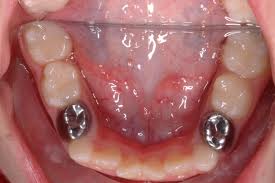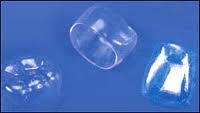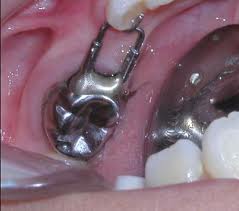 Intoduction to crowns for children
Intoduction to crowns for children
Just as we have crowns in adult dentition, so we have crowns for children. These crowns differ from those in adults in many ways, as will be discussed in the following sections. When your child has caries in his or her teeth, restorations with fillings such as composite or even amalgam is sufficient for small cavities, but if the cavity has become so large to an extent that normal restorations will be weak and easily fracture, a crown becomes the better option to protect the tooth from further damage.
How do they differ from adult crowns?
1. Material
Adult crowns can be made from metal (nickel-chromium), ceramics, or reinforced ceramics. Crowns for children can be made of these as well, but additionally the most common crown used in children are made of stainless steel
2. How long they should last in the mouth
Crowns in adults are made to last as long as possible,i.e. the longer the better. Crowns for a child are usually used to protect a primary tooth and hence only need to last as long as the tooth remains in the mouth.
3. How the crowns are made
Adult crowns are usually fabricated in the laboratory following tooth preparation in the dental set up and taking impressions of the prepared tooth and the rest of the dentition. Stainless steel crowns are pre-formed and are available in several shapes and sizes. A crown that matches the size and shape of the tooth to be replaced is chosen and is adapted and contoured to be fitted onto the tooth after removing some of the surfaces of the original tooth.
What are the types?
1. Stainless steel
This is the most commonly used crown in a child. They are also known as “silver crownsâ€, notably due to their silver colour. These crowns are popular because they are less demanding technically, and require almost no replacements prior to shedding of the primary tooth. Also, stainless steel crowns are cheaper as they require no laboratory work. The main disadvantage is the poor appearance that comes with it being silver. It is particularly obvious if a lower tooth was replaced. However, children may not be so particular about appearance as much as an adult would. In fact, they may even choose to show off their “metal toothâ€.
2. Nickel chromium
This is the same material used in metal crowns for adults.
3. Veneered stainless steel crowns
This is the same as a stainless steel crown, with the exception of the presence of a veneer on the front surface of the tooth, giving it a more tooth-like appearance. However, this extra layer of veneer gives it an extra bulge, which may be apparent in some individuals, thus decreasing its esthetic value.
4. Strip crowns
Strip crowns are also known as resin crowns that gives the tooth the natural tooth colour. They are basically thin plastic crowns in the shape of the wanted tooth, which can be filled with resin or composites and placed over the tooth needing a crown, and allowed to set. Once the resin has set, the crown can be easily stripped off, leaving no extra bulk, giving it a better appearance compared to both stainless steel or veneered stainless steel crowns. The disadvantage of this type of crown is its decreased strength and likeliness to fracture. Also, resins tend to
5. Ceramic crowns
These crowns are usually done in adults wanting esthetic and long-lasting crowns, and rarely done for children. However, it is still an option.
When are they indicated?
1. After pulp therapy
2. Caries on multiple surfaces
3. Developmental defects such as hypoplastic tooth (weak tooth structure) or as in amelogenesis imperfecta
4. Fractured tooth
5. Rampant caries
6. As abutment for space maintainers
7. In children with bruxism (grinding) habits
8. Restoration of hypomineralized young permanent molars
9. Discoloured tooth
10. The tooth did not erupt properly
11. Abnormal shape of tooth
When are they contraindicated?
1. When the tooth is near its exfoliation time (regardless whether it is already mobile or “shakyâ€). For example, a lower primary 1st molar is expected to be shedded at the age of 9-11, so a child of that age range with a defective lower primary 1st molar will not need to have a crown fabricated for that tooth.
2. Uncooperative patients
Crown fabrication will require a high degree of cooperation from the child, as the procedures involves removal of some of the tooth surface and repetitive trial fitting of the crown onto the tooth. In some cases, an impression of the dentition will have to be taken (eg if the crown were to be fabricated in the laboratory).

